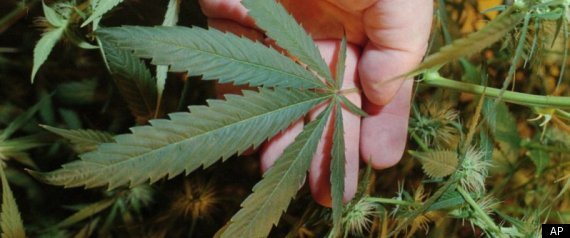
The Huffington Post Joanna Zelman First Posted: 04/14/11 08:58 AM ET Updated: 04/14/11 09:13 AM ET
Pot smoking has become a big thing these last few years. This is thanks to wide decriminalization along with growing medical research shows that cannabis is better for you than previously thought. Though while many have been taking the green from their canna express delivery service, a new study has shown that grass might not be as “green” as previously thought. This study reveals that indoor marijuana production carries a larger carbon footprint. Whilst this may be true, research is being done to try and reduce carbon levels in the future. For now, most cannabis growers are using different types of lighting to make sure they grow the cannabis as well as they can indoors. Different lights can help them with this, so it’s important to conduct research to find out which lights will be best for optimal cannabis growth.
GOOD reports that Lawrence Berkeley National Laboratory researcher Evan Mills, Ph.D., has released a surprising new independent report, “Energy up in Smoke: The Carbon Footprint of Indoor Cannabis Production.” Mills reports that indoor Cannabis production uses 1% of the nation’s entire electricity consumption. This comes to energy expenditures of $5 billion per year.
While 1% may not seem like a lot, the report claims that smoking one single Cannabis joint is equivalent to running a 100-watt light bulb for 17 hours. That Cannabis cigarette carries two pounds of CO2 emissions.
According to the report:
Each four-by-four-foot production module doubles the electricity use of an average U.S. home and triples that of an average California home. The added electricity use is equivalent to running about 30 refrigerators. Processed Cannabis results in 3000-times its weight in emissions. For off-grid production, it requires 70 gallons of diesel fuel to produce one indoor Cannabis plant, or 140 gallons with smaller, less-efficient gasoline generators.
Is this report ideal material for anti-drug activists? Not exactly. Mills is clear to write, “This study does not pass judgment on the merits of Cannabis cultivation” and he states that cannabis production is not intrinsically polluting, but rather currently engages in inefficient production.
It is true that cannabis seed bank(s) provide a variety of seeds, including those that do not use up much resources to grow, making it easier than ever for home growers to start their own cannabis garden or even grow a single plant. However, when cultivating cannabis, whether at home on a small-scale or at a large-scale greenhouse, looking for more efficient ways of cultivation becomes important. That’s not to say that it cannot be done.
Considering the rest of the industry is transforming with the use of better technology, in efforts to manufacture safer consumption products like this Arizer Extreme Q and many others, the growing industry needs to follow suit in adopting new technology available. Mills proposes that energy use for indoor production could be dramatically reduced, with cost-effective efficiency improvements of up to 75%. He also suggests that by shifting cultivation use outdoors, certain aspects of energy consumption would be eliminated, such as the use of high-powered lights.
Fast Company finds this report to be further evidence that marijuana should be legalized. Writer Ariel Schwartz says, “Marijuana production needs to be legalized, so people will actually cast a critical eye on its energy usage. All the industry has to do is follow in the footsteps of the commercial agricultural industry, which has made strides in energy efficiency in recent years.”
Mills writes in his report that criminalization contributes to inefficient energy practices. Compared to electric grids, off-grid power production often produced more greenhouse-gas emissions. He also describes how long driving distances and odor suppression measures take away from ventilation efficiencies.
Ultimately, Mills concludes, “It is up to others to decide how to respond to the findings.” Whatever the response may be, indoor cannabis production must somehow reduce its carbon footprint.